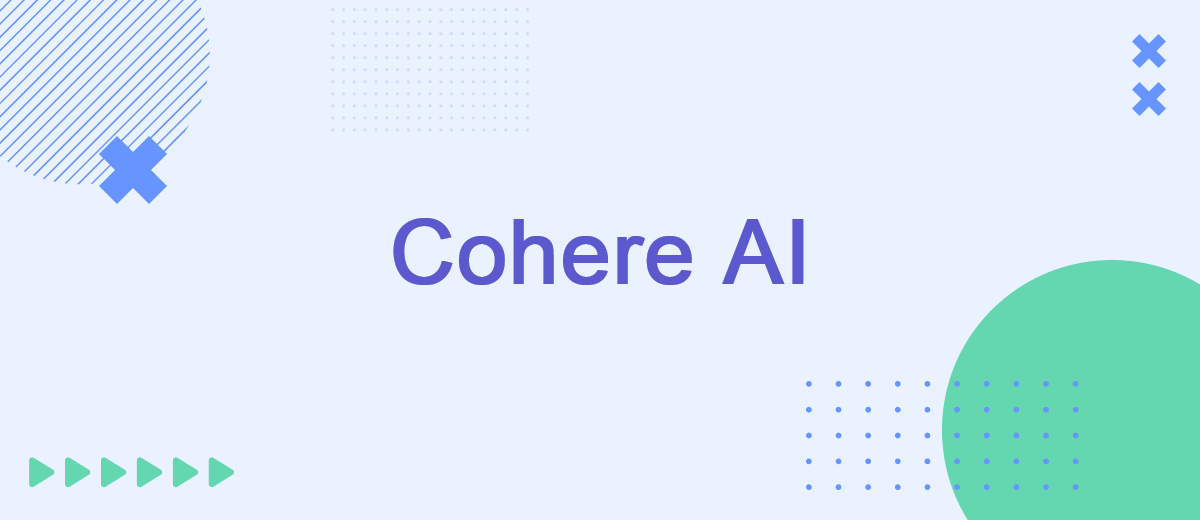The highly competitive AI technology industry is now saturated with promising brands. One of them is Cohere. Little known until recently, the Canadian multinational technology company made a big splash with the release of its top-of-the-line language model, Cohere Command AI. In our article, we will talk about the history of this startup, its products and their areas of application, and also compare it with OpenAI and Anthropic.
What is Cohere AI?
Canadian IT startup Cohere AI is known for its large language models (LLMs) that it develops for large businesses. The company was founded in 2019 by three computer scientists – Ivan Zhang, Nick Frosst, and Aidan Gomez. At the time of writing, the latter holds the position of CEO of the enterprise. Previously, Aidan Gomez and Nick Frosst worked together at Google Brain, where they participated in the creation of the "transformer" ML architecture. As of 2024, the startup has about 300 employees, and its head offices are located in Toronto (Canada) and San Francisco (USA).
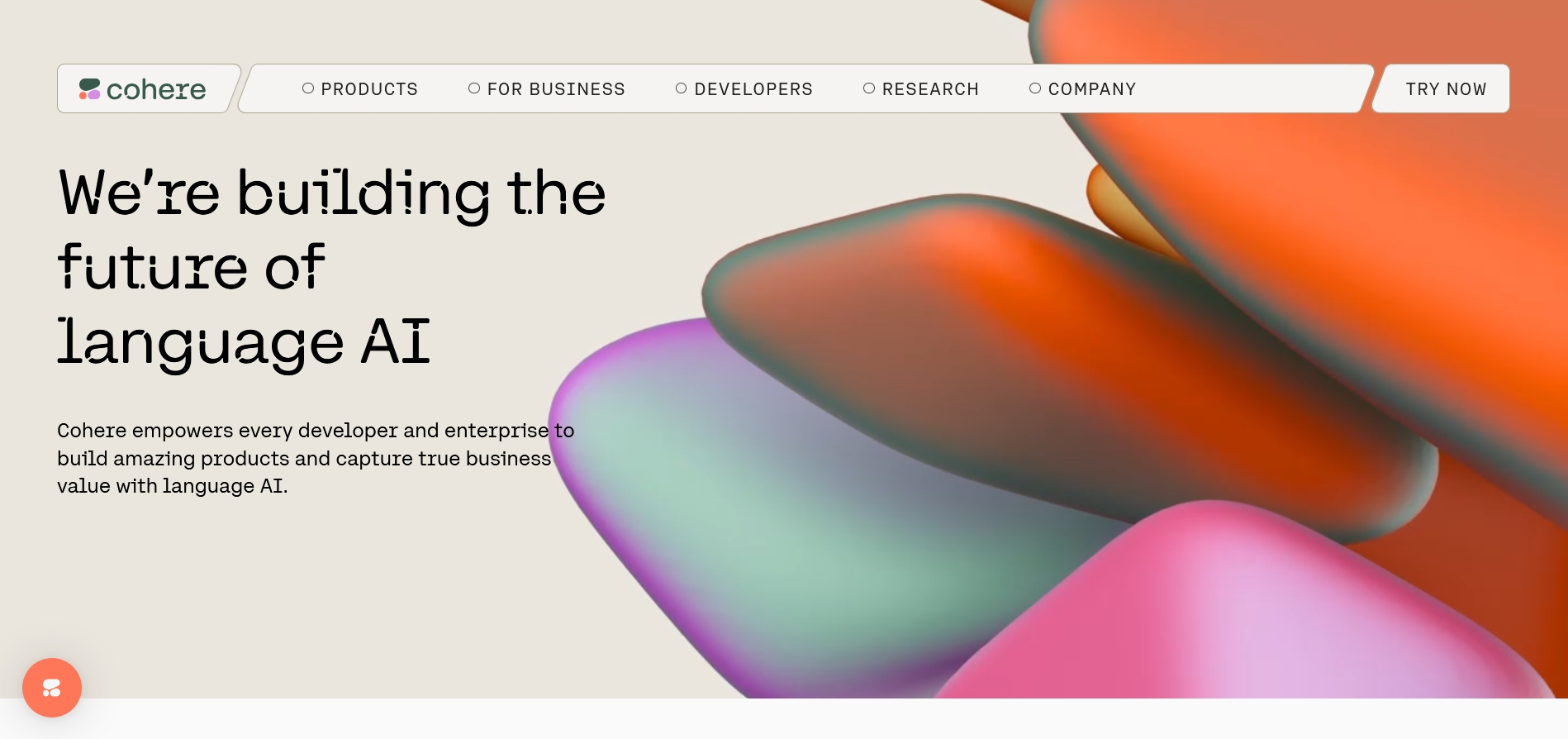
In November 2021, Google Cloud announced a partnership with Cohere AI, allowing the latter to use Cloud TPU and other infrastructure to develop and deploy its products. In June 2022, the non-profit laboratory Cohere For AI was launched, which began research in the field of machine learning. In December of the same year, the startup introduced the multilingual open-source model Aya, capable of working with text in more than 100 languages.
In June 2023, news of a partnership between Cohere and Oracle emerged. The Canadian company's AI technologies have been integrated into Fusion Cloud, NetSuite, and a number of other Oracle business applications. That same year, Cohere began joint projects with consulting firm McKinsey & Company and software developer LivePerson. In September 2023, the startup released a new product – the Coral chatbot for business, which helps employees quickly find information in the knowledge base.
In September 2021, the company raised $40 million in venture funding in a Series A round led by Index Ventures. In February 2022, it received an additional $125 million Series B investment led by Tiger Global. In June 2023, Cohere AI listed another $270 million Series C tranche with participation from Inovia Capital, Oracle, Salesforce, and Nvidia. After that, its capitalization was estimated at $2.2 billion.
The company now aims to raise at least another $500 million to bring its valuation to $5 billion. As of March 2024, the enterprise's annual revenue increased to $22 million (in December 2023, it was $13 million). The release of the new Command-R language model helped the startup achieve such a significant increase in financial performance.
Exploring Cohere's Language Models
Having received general information about the company and its activities, you are probably interested in what Cohere AI does. Over the 5 years of its existence, the startup has released several LLMs developed based on a transformer-type architecture and trained on supercomputers. We invite you to familiarize yourself with its three models: Command, Embed, and Rerank.
Command
The newest version of the Cohere Command R AI language model was introduced in the spring of 2024. Microsoft Azure users were the first to try it out. In the near future, the developers plan to add support for Oracle Cloud Infrastructure (OCI). A context window of 128,000 tokens allows this LLM to efficiently automate complex business processes and support advanced search generation (RAG) with citations to reduce the likelihood of hallucinations.
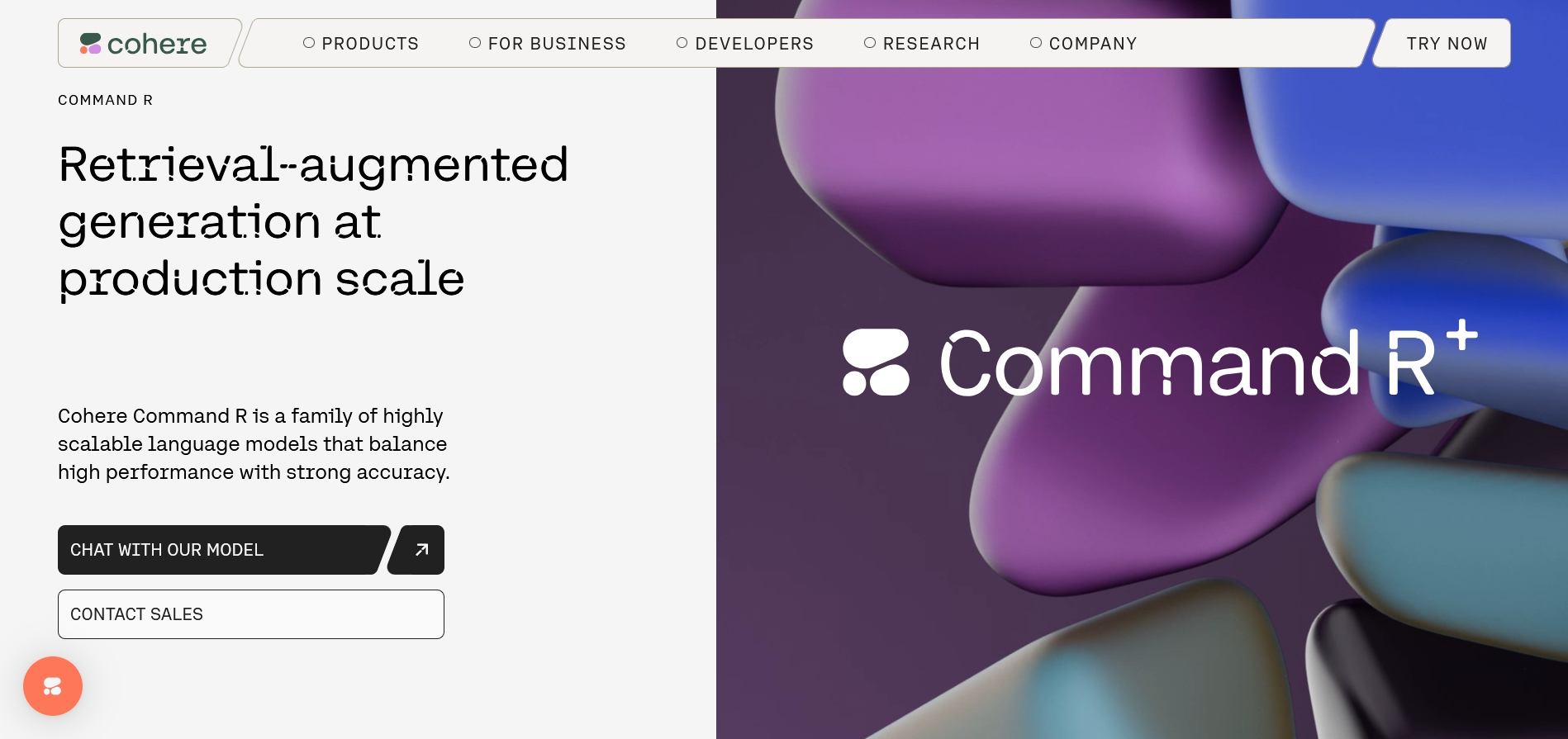
Cohere R AI is capable of creating product descriptions, press releases, email newsletters and other text content. Users can ask the neural network questions about the content of a document to categorize it, extract specific data, or obtain general information about the document. The capabilities of the language model are expanded by a set of Tool Use functions, available through the API and LangChain. It is optimally suited for solving complex corporate problems, including automatic updating and entering data into CRM.
LLM Command is capable of combining multiple tools incrementally to complete tasks. When an error or failure is detected, the model retries, which increases the likelihood of a successful result. One of the key features of Cohere's flagship product is multilingual support. It easily understands, generates, and processes text in 10 languages: English, German, French, Spanish, Italian, Portuguese, Japanese, Korean, Chinese, and Arabic.
Embed
The Embed language model, designed for text processing, is one of the leading models in the Canadian startup's portfolio. It is trained to recognize important patterns in the provided data sets, effectively filtering out errors and irrelevant information. Its key feature is increased accuracy, which allows the neural network to quickly process queries with high relevance, saving time and computing resources.
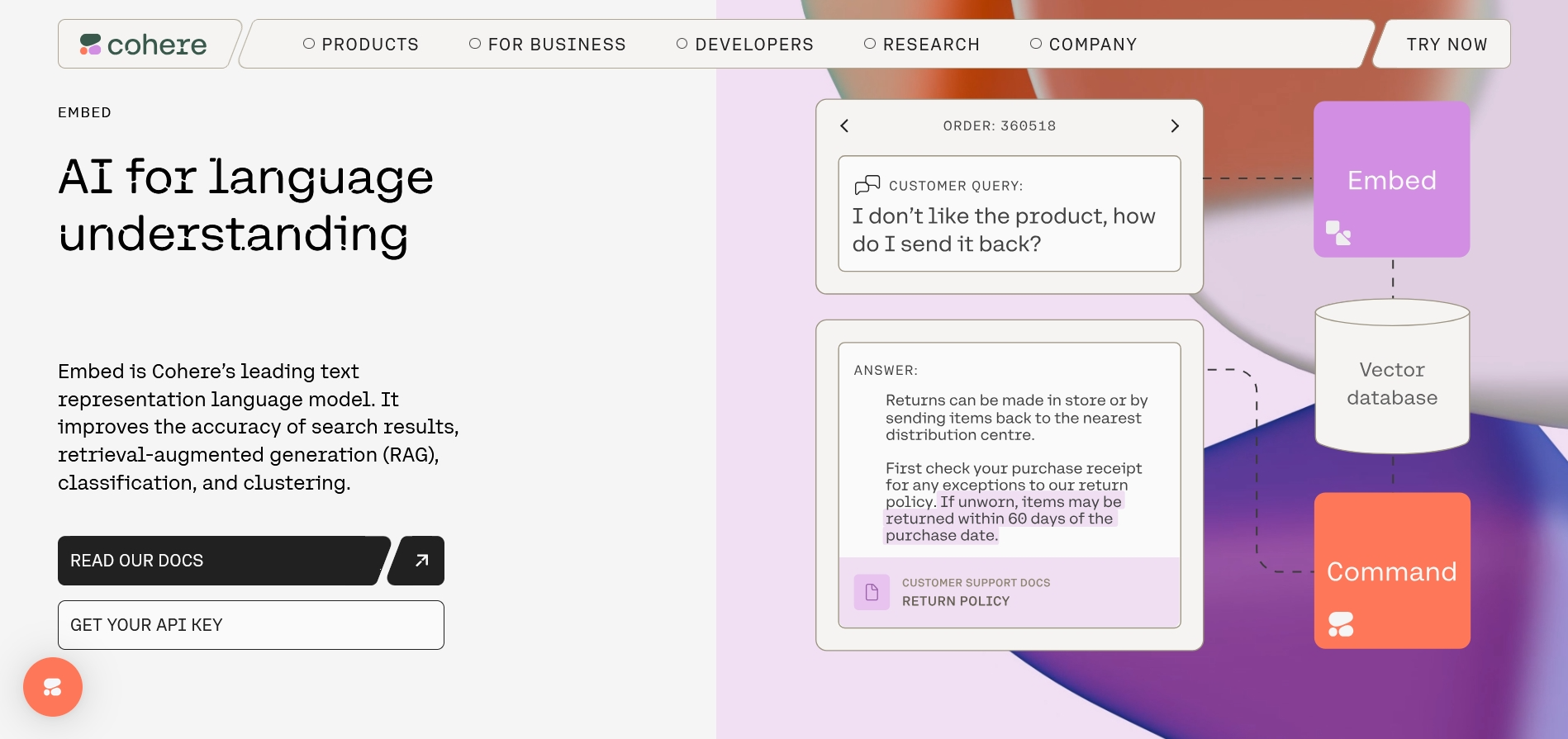
Embed supports embeddings by searching for meaning based on context and user intent. In this regard, LLM is significantly superior to previous keyword matching systems. With its help, users can work more efficiently with large archives, grouping texts by their meaning and identifying patterns. This language model can be used as a basis when developing systems for automatic text classification.
Rerank
The Rerank language model is a powerful tool in Cohere AI’s arsenal. It allows you to significantly improve the quality of search for any keyword or vector search engine without radical optimization or replacement of technologies.
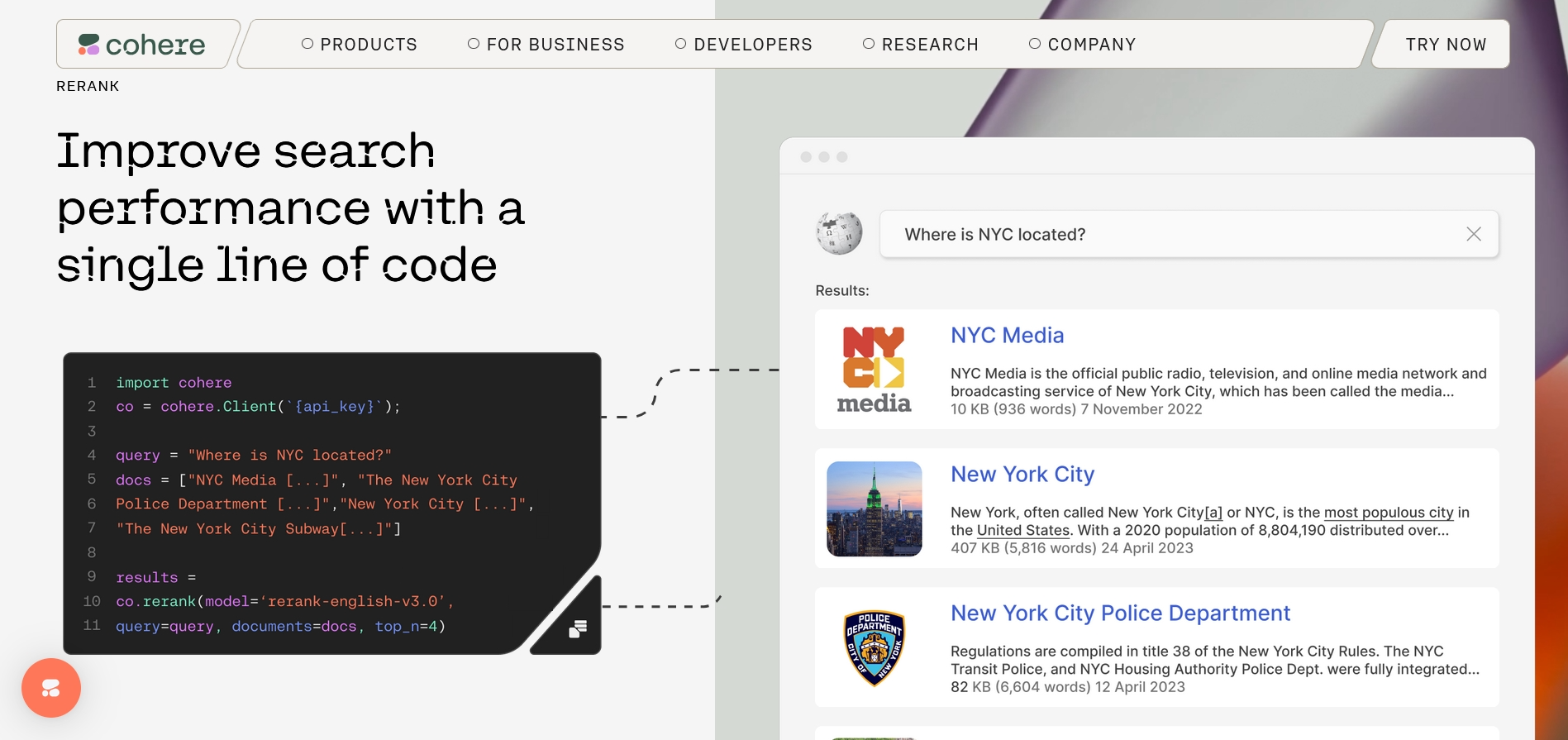
Users of this LLM receive the following opportunities:
- Much more accurate search through integration with Elasticsearch or OpenSearch.
- Improved customer service performance through faster, more relevant responses.
- Reducing the number of errors and inaccuracies in the operation of search algorithms, guaranteeing the clarity of the semantic context.
- Flexible configuration and scaling of the language model in accordance with the current load level.
- Access to Rerank and other company LLMs via SaaS API, cloud services (OCI, AWS SageMaker, Bedrock), and private deployments (VPC and on-premises).
Applications Across Industries
The opportunities for using Cohere LLM in industries such as retail, professional services, finance, and technology are quite wide. Let us give some examples of them:
- AI assistant for asset management (Command, Rerank). Using augmented data generation (RAG) models, you can create a virtual assistant that can answer analysts' questions based on information from a cloud repository.
- Segmentation and analysis of user feedback (Embed). Based on LLM, retailers can build tools to automate the collection of data from support tickets and user reviews in more than 100 languages. AI automatically groups data by attributes and distributes it into language clusters.
- AI assistant for staff support (Command, Rerank). You can create a search application that is integrated with your HR database. With its help, company employees will quickly receive answers to questions that correspond to their position, place of work, and other criteria.
- Executive assistant (Command, Embed). Using Cohere Technologies products with support for RAG and external agents, you can achieve an AI solution for extracting and managing structured data. LLMs distribute data retrieval and computation tasks across multiple steps, providing accurate answers to complex queries.
- AI assistant for online shopping (Command, Rerank). The developers integrated language models with an online store, product catalog, inventory, and customer service applications. Thanks to them, you can create a virtual assistant with conversational functionality that will give shopping recommendations and select personalized offers.
Cohere vs. Other AI Models
The developers position Cohere AI as an innovative AI platform that promotes the development and optimization of the activities of corporate clients. The startup's products are focused primarily on the business audience, which distinguishes it from other industry representatives interested in the average consumer. The Canadian startup is most often compared to such well-known AI solution providers as OpenAI and Anthropic. However, there are significant differences between them in philosophy and approach to business, so a direct comparison of Cohere vs OpenAI or other brands will not be entirely correct.
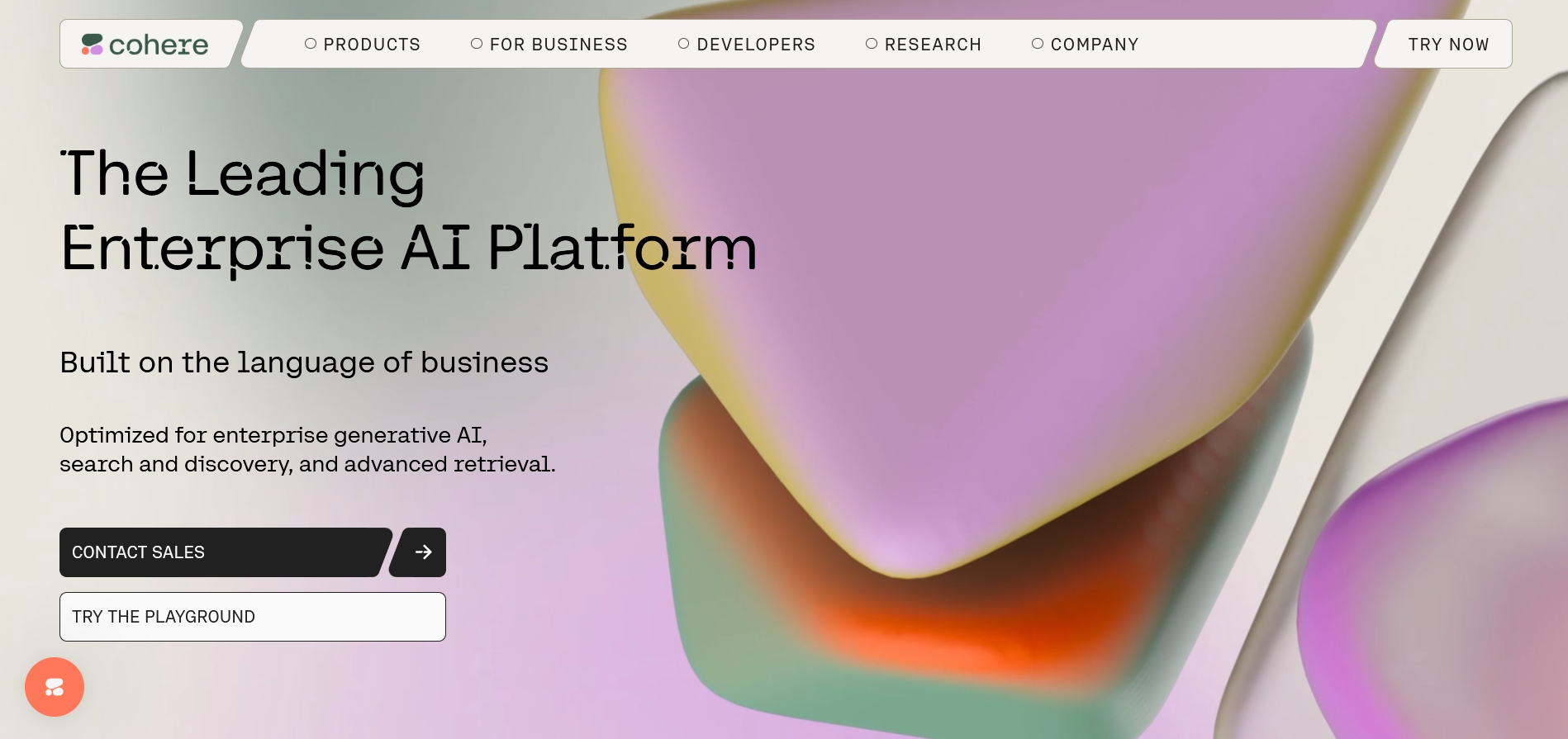
Thus, OpenAI is focused on developing and improving universal, highly functional AI products that are understandable and convenient for a mass audience. Anthropic focuses on the moral and ethical issues of artificial intelligence, so its solutions are characterized by increased security and transparency. As for Cohere, its business approach is based on ease of integration, customization, and scalability. The startup has found a promising niche in the development of industry-specific AI solutions for various business areas and is working intensively in this direction.
Let's now compare the prices of the language models of the mentioned companies.
Cohere pricing:
- Command R+ – $3 per 1 million input tokens, $15 per 1 million output tokens.
- Command R – $0.5 per 1 million input tokens, $1.5 per 1 million output tokens.
- Rerank 3 – $2 per 1000 search queries.
- Embed 3 – $0.1 per 1 million tokens.
OpenAI pricing:
- GPT-4o – $5 per 1 million input tokens, $15 per 1 million output tokens.
- GPT-3.5-Turbo-0125 — $0.5 per 1 million input tokens, $1.5 per 1 million output tokens.
- GPT-3.5-Turbo-Instruct — $1.5 per 1 million input tokens, $2 per 1 million output tokens.
Anthropic pricing:
- Claude 3.5 Sonnet – $3 per 1 million input tokens, $15 per 1 million output tokens.
- Claude 3 Opus – $15 for 1 million input tokens, $75 for 1 million output tokens.
- Claude 3 Haiku – $0.25 per 1 million input tokens, $1.25 per 1 million output tokens.
Having studied the pricing policies of companies, we can conclude that Anthropic has the highest cost of using LLM. The tariff of its Claude 3 Opus model stands out greatly from the overall, generally even picture. At the same time, its two other LLMs are practically no different in price from their competitors. Cohere offers the lowest rates.
Looking Ahead: Cohere’s Future in AI
Cohere has done a lot of work adapting large language models to the needs of large businesses. This has allowed it to attract a considerable amount of investment. At the same time, the company has not announced ambitious goals and has not promised to change the life of mankind. Instead, it sets clear and measurable plans, such as the large-scale deployment of its artificial intelligence solutions, scheduled for 2024.
Cohere isn't just developing AI products, it's also reimagining how businesses access and use information. At the same time, the company strives to make its LLMs available not only to corporations but also to ordinary users. To do this, it has launched Cohere Playground. It is a visual interface through which developers can test APIs and iterate through prompts without having to write code by hand. This tool gives them the opportunity to try out different uses of language models and build their functionality into their applications.
Conclusion
The Canadian enterprise AI solutions company, Cohere, has recently emerged from the shadow of its more famous competitors, such as OpenAI or Anthropic. While its products may not be widely known to the general public, they are tailored to meet the specialized business needs of various industries. Currently, Cohere provides its clients with three language models that offer text processing capabilities, in-depth data search, and business process automation. The main strengths of Cohere's products lie in their ease of integration, flexible customization, and scalability.
